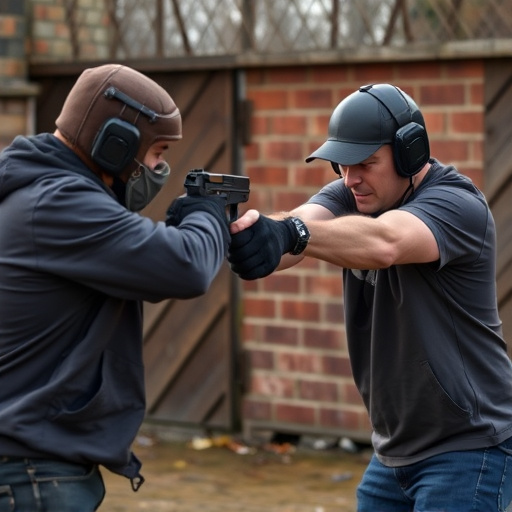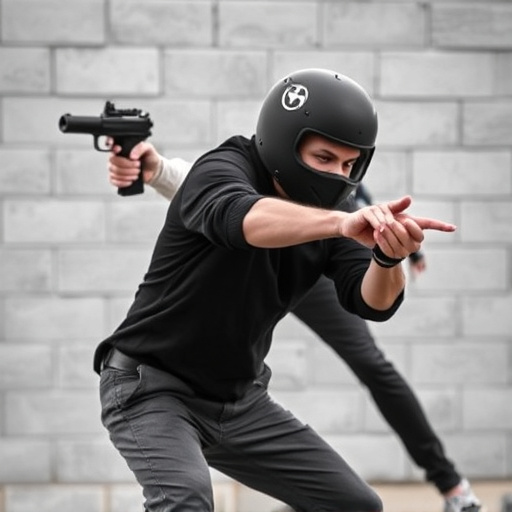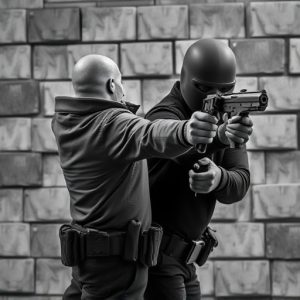Weather-Resistant Stun Guns: Safety, Science & Real-World Use
A stun gun's effectiveness stems from its ability to disrupt the nervous system's electric…….
A stun gun's effectiveness stems from its ability to disrupt the nervous system's electrical signaling, causing disorientation, muscle spasms, and temporary paralysis. When choosing a weather-resistant model, look for robust construction, waterproof housing, and higher voltage models that balance power with safety. Ideal for security personnel, hikers, and harsh climates, these stun guns require proper training, legal understanding, and secure storage to maintain their reliability and efficacy while minimizing harm.
“Uncover the power of weather-resistant stun guns, designed to protect in harsh conditions. This article delves into the science behind stun gun effects on the nervous system, guiding you through key considerations for selection. From durability to performance, explore factors that ensure effectiveness. Discover real-world applications and crucial safety precautions, making informed choices for personal or professional use. Unravel the technology, understand the impact, and stay prepared in any climate.”
- Understanding the Science Behind Stun Gun Effects on the Nervous System
- Factors to Consider When Choosing Weather-Resistant Stun Gun Models
- Real-World Applications and Safety Precautions for Weather-Resistant Stun Guns
Understanding the Science Behind Stun Gun Effects on the Nervous System

The stun gun, a powerful personal defense tool, operates by disrupting the nervous system’s normal electrical signaling. When activated, the device emits an electric current that interferes with muscle control and balance, temporarily paralyzing the target. This effect is achieved through the application of high voltage and low amperage, ensuring minimal physical harm while neutralizing an assailant effectively.
The nervous system, with its intricate network of neurons and electrical impulses, serves as the primary target. The stun gun’s current interferes with the transmission of these impulses, leading to muscle spasms and loss of coordination. This disruption can cause the individual to experience disorientation, temporary paralysis, or even muscle contractions so severe that they prevent the use of affected limbs. Understanding these stun gun effects on the nervous system is crucial in recognizing their efficiency as a self-defense mechanism, providing users with a powerful tool for personal safety.
Factors to Consider When Choosing Weather-Resistant Stun Gun Models

When selecting a weather-resistant stun gun, several key factors come into play. First and foremost, consider the device’s construction—look for robust materials that can withstand outdoor elements. Weather-resistant models often feature sturdy frames, sealed components, and waterproof housings to protect against rain, snow, and extreme temperatures. These features ensure the stun gun maintains its functionality in any environment.
Additionally, understanding the stun gun’s design and its impact on the nervous system is essential. Stun guns utilize high voltage, low amp electrical discharge to disrupt muscle control and cause temporary incapacitation. The effectiveness lies in delivering a powerful enough shock to overpower an attacker without causing severe harm. Higher voltage models are generally more powerful, ensuring swift and effective stun gun effects on the nervous system for self-defense scenarios.
Real-World Applications and Safety Precautions for Weather-Resistant Stun Guns

In practical terms, weather-resistant stun guns offer a unique advantage in outdoor or adverse conditions. Their rugged design ensures they can withstand varying weather, making them ideal for security personnel patrolling remote areas, hikers facing unexpected storms, or individuals living in regions with harsh climates. These devices are specifically engineered to deliver powerful jolts even when exposed to moisture, extreme temperatures, or rough handling—features that conventional stun guns might lack.
When considering the safety aspects of weather-resistant stun guns, it’s crucial to understand their effects on the nervous system. Stun guns temporarily disrupt muscle control by sending electric currents through the body, aiming to incapacitate rather than harm. The current disrupts nerve signals, leading to a strong muscle spasm and temporary paralysis. However, users must adhere to safety protocols, such as ensuring proper training, understanding legal implications, and storing devices in dry, secure places to maintain their functionality and reliability.
When selecting a weather-resistant stun gun, understanding the science behind its effects on the nervous system is key. These devices disrupt communication between nerves and muscles, providing a powerful tool for self-defense in challenging environments. By considering factors like build quality, power output, and additional features, users can choose models designed to withstand harsh weather conditions. With proper safety precautions, weather-resistant stun guns offer valuable protection in outdoor settings, ensuring peace of mind and enhanced personal security.


